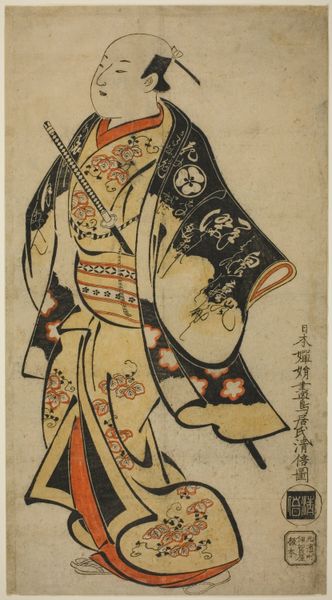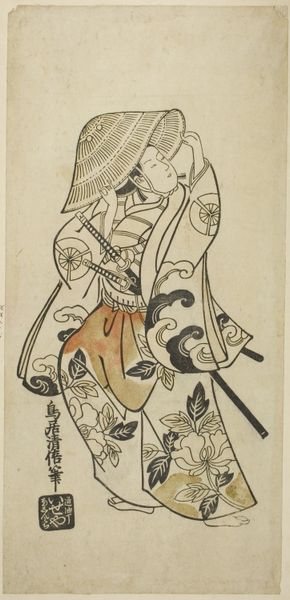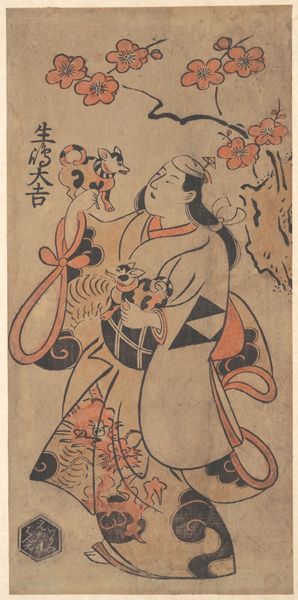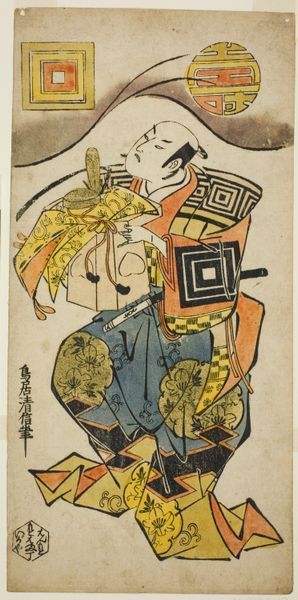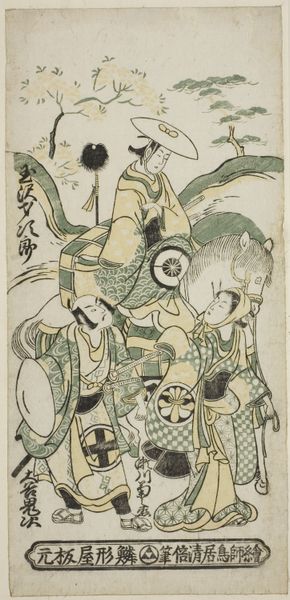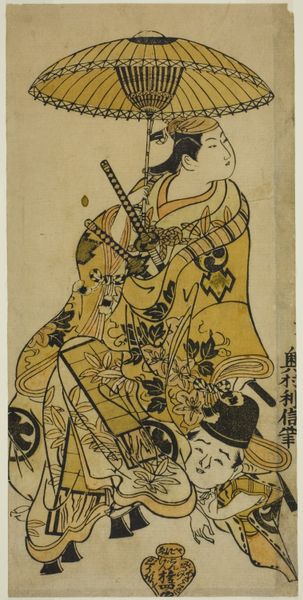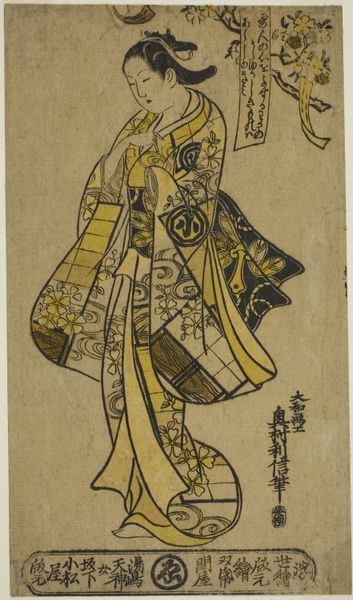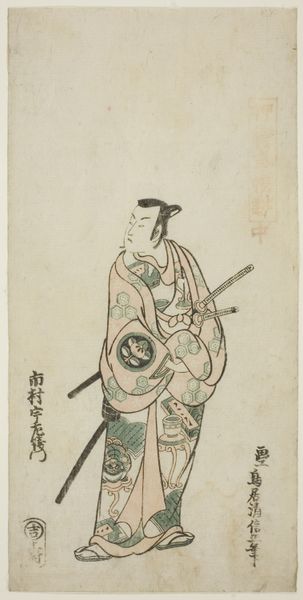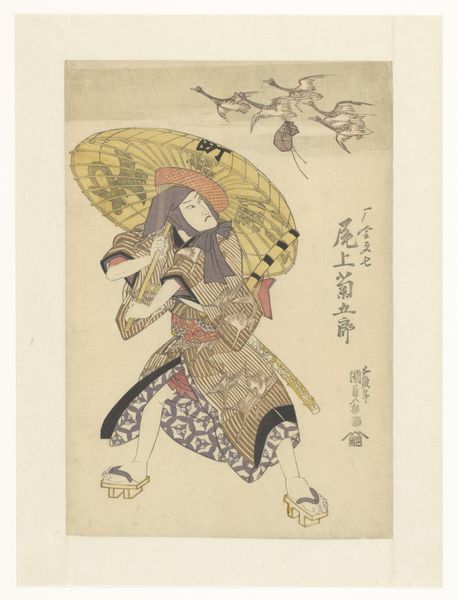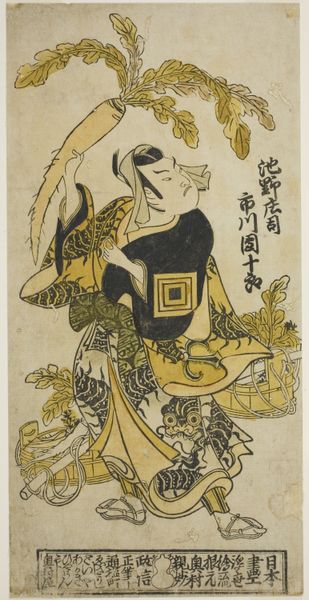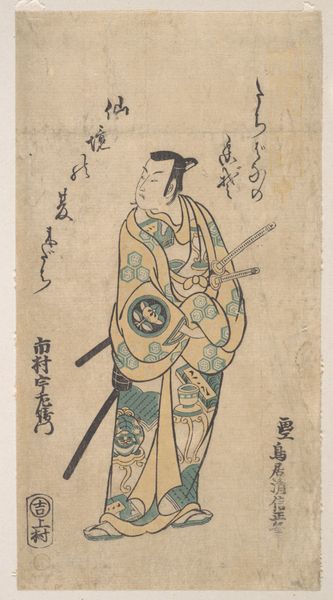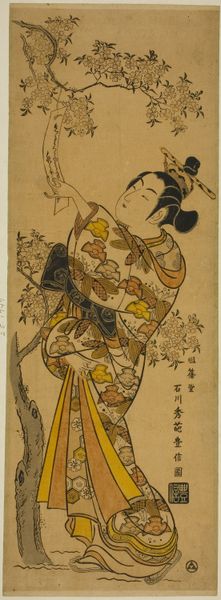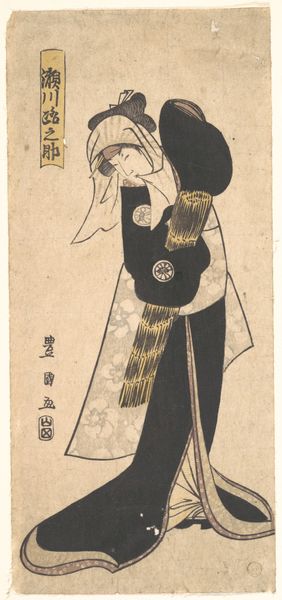
The Actor Sawamura Sojuro I as Soga no Juro in the play "Tsuru Kame Osana Soga," performed at the Ichimura Theater in the first month, 1721 (?) c. 1721
0:00
0:00
print, woodblock-print
#
portrait
# print
#
asian-art
#
ukiyo-e
#
figuration
#
woodblock-print
#
japanese
#
genre-painting
Dimensions: 12 × 6 in.
Copyright: Public Domain
Curator: Here we have a woodblock print by Torii Kiyotomo dating to around 1721. It depicts the actor Sawamura Sojuro I in the role of Soga no Juro. The piece is currently held at The Art Institute of Chicago. Editor: Immediately striking, isn’t it? The figure fills the frame with this imposing stillness, but also an undeniable flamboyance through the elaborate costume and that intriguing upward gaze. Curator: Exactly. This work comes from the early Edo period. What Kiyotomo captures here are not only theatrical depictions but also a distinct brand of celebrity. The print functions as a visual commodity that amplifies an actor's persona and solidifies his fame. The image allows his fans to further enjoy their experiences of seeing the actor on stage. Editor: Right, celebrity portraiture through Ukiyo-e traditions, serving a growing urban populace and booming theater scene. Note how gender roles, performance, and class distinctions are being negotiated within this seemingly simple image. Curator: The detail in the garments provides important clues about his role. He is presented in "aragoto" style – this is a hyper-masculine, boisterous acting style, typified by the exaggerated makeup, costume, and powerful stance. This ties directly to representations of heroism and strength as a public service. Editor: The choice of Kiyotomo to focus on a Kabuki actor like Sojuro, framed by his theatrical persona, elevates what would have likely been considered popular or low brow culture in that time period. You know, examining these images prompts some deeper thoughts, particularly when questioning what exactly constituted cultural "value," particularly as it applies to cultural perceptions today. Curator: It’s this friction, the conflation of artistic expression, cultural expectations, and, yes, even political messages, that give early Ukiyo-e pieces their strength. Sawamura as Soga embodies a heroic ideal, amplified for the stage, mass-produced in print, consumed by the populace, and judged over the long term. Editor: Yes! Today, we have the historical context for understanding the power dynamics within it, helping reveal how the construction of gender and identity, mediated by social forces, still continues to evolve within the political landscapes.
Comments
No comments
Be the first to comment and join the conversation on the ultimate creative platform.
